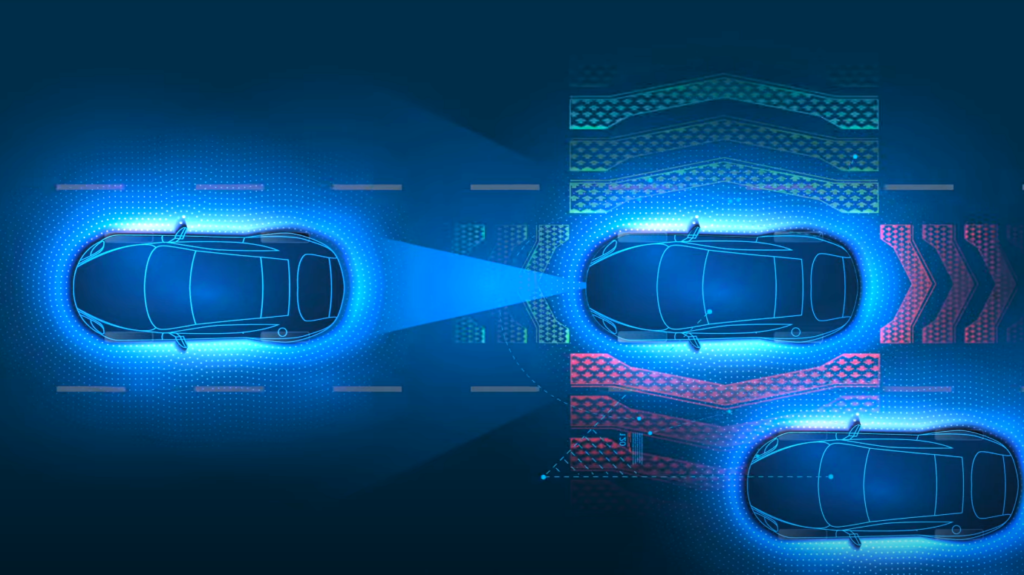
onsemi contributed article offer: How will NHTSA's most recent AEB ruling affect consumers and the automotive industry?
Figure 1: Illustration of automotive sensing technologies
The US National Highway Traffic Safety Administration (NHTSA) finalized the new mandate for all new passenger vehicles to come fitted with automatic emergency braking (AEB)systems as standard by September 2029. AEB is the process of where a vehicle can apply the brakes to avoid a potential incident. AEB is also one of the most powerful safety measures the industry is adding to cars because it is capable of reducing the impact speed or mitigating a crash altogether, preventing a common cause of vehicle damage, injury and fatalities.
On the surface, the mandatory AEB is good for consumers. The NHTSA’s push to establish a ratings system that rewards capabilities impacted by speed, target type, distance, and other conditions such as night vs. day, will ultimately drive the industry, but does it go far enough?
Understanding if the NHTSA AEB standard will act soon enough to impact the automotive sector needs an appreciation for not just the plan, but AEB technology as a whole. By exploring the underlying technologies, as well as automakers’ rate of progress and market trends, it is then possible to properly determine the potential value of the NHTSA’s rule.
NHTSA’s Plan
In 2016, the NHTSA asked 20 automotive manufacturers, which made up 99% of all vehicle sales in the US, to voluntarily make some form of AEB a standard feature in their passenger vehicle range by 2022. Four years later, in 2020, another NHTSA report showed the industry was potentially off target, with just 10 of the 20 manufacturers implementing some form AEB as a standard feature. This report theoretically opened the door for mandatory regulation, but no such statement was made until May this year. Between the initial request and the new proposal, the Insurance Institute for Highway Safety (IIHS) has issued follow-up reports as seen in Figure 2.
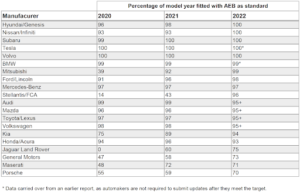
Figure 2: 2020 through 2022 shows a sizeable increase for most automakers (Source: IIHS)
Comparing the IIHS data against the initial 2020 report by the NHTSA highlights some interesting trends. The first is that in 2022, 14 of the 20 manufacturers equipped at least 95% of their vehicles with some form of AEB, compared to 10 just two years earlier. But if we look at the six outliers it further displays the rapid rate of progression. In 2022, Kia reported 94% and Acura (Honda) reported 93%, but were previously above the threshold in 2021 before part shortages and a further four manufacturers up to an average of 72% from 38% in 2020. For 2023, all manufacturers have indicated the deployment of AEB will increase again, with General Motors (GM) stating that 98% of their 2023 models would be equipped with the technology. This rapid year-on-year increase and the timing of NHTSA’s proposal create a few interesting questions. The primary concern for many is whether it will make any real difference, as it appears all manufacturers will have some form of AEB across their range before the standard is in place. But understanding why the proposal has been created can add some weight to its value.
First, it is important to look at exactly what the proposed plan intends. For vehicle-to-vehicle incidents, future AEB systems would need to take full action up to 50mph when a driver fails to react. If a driver brakes but not with the full force required, the future AEB system would have to fully avoid another vehicle at speeds up to 62 mph. The proposed vehicle-to-vehicle AEB scenarios include a vehicle approaching a stopped lead vehicle, a slower-moving lead vehicle and a decelerating lead vehicle.
For vehicle-to-pedestrian incidents, all cars would have to take action at speeds up to 40mph. The proposed scenarios include a vehicle approaching a (left or right) crossing path pedestrian, a pedestrian stationary along the path of the vehicle and a pedestrian walking along the path of the vehicle. The technology would also need to work at night, with the NHTSA stating that more than 70% of pedestrian fatalities occur at night in the US.
This proposal was recently approved at the end of April 2024, meaning the mandated deployment will be effective from September 2029 for model year 2030.
With statistics like the number of nighttime fatalities, and studies showing that AEB could save 360 lives a year as well as reduce injuries by at least 24,000 annually in the US, it’s clear why NHSTA is focusing on AEB, and why the NHTSA has targeted the technology. But is compulsory action for some form of AEB necessary, given most vehicles are already coming with some form of AEB? We’ve seen the European New Car Assessment Program (Euro NCAP) as an example, establishing a graded rating system that drives the market to higher levels of capability and safer cars. Could the NHTSA save even more lives by going even further with an even higher capability rating system?
AEB Regulations: American vs European
Given the sharp uptake in the technology, especially in the past three years, and understanding typical automotive development times are on the order of every three years, it is easy to see why a target date of September 2029 (model year 2030) for mandatory implementation is probably not aggressive enough to have any short-term impact.
Since 2019, as the recognized method of ranking a vehicle’s safety within Europe, to attain a five-star Euro NCAP rating, AEB must be implemented. While this could be seen as progressive, the EU Commission took a step further by mandating that all new vehicles sold from 2022 onwards are fitted with vehicle-to-vehicle AEB, with vehicle-to-pedestrian systems mandatory from 2024.
Moreover, the scopes differ significantly between the NHTSA mandate and the Euro NCAP’s regulations. While both standards cover similar vehicle-to-vehicle and vehicle-to-pedestrian AEB scenarios (including pedestrian adult/child targets and nighttime conditions), the Euro NCAP also covers several vehicle-to-bicyclist and vehicle-to-motorcyclist AEB scenarios, hence taking into consideration a broader range of vulnerable road users (VRUs).
Furthermore, the Euro NCAP covers vehicle-to-pedestrian AEB scenarios with a (left or right) turning vehicle or a backward-moving vehicle – unlike the NHTSA’s mandate – which in comparison, is five years behind its European counterpart.
Understanding AEB System
As one of the main advanced driver assistance systems (ADAS), AEB is a powerful vehicle safety measure that can make a significant difference, especially for vehicle front-to-rear and vehicle-to pedestrian collisions. Typical AEB systems use a combination of visible wavelength image sensors, LiDAR, and/or RADAR to perceive objects which might lead to a potential impact. The vehicle analyzes the images in real-time and if a collision is imminent, the driver is alerted to apply the brakes. If the driver fails to respond to the alert in sufficient time, the system will take action by applying the brakes to bring the vehicle to a halt.
For an image sensor, AEB system requirements translate into field-of-view (FOV), resolution, frame rate, dynamic range, number of exposures (latency), and low light performance requirements as these image sensor characteristics directly impact object detectability, object detection latency, and avoidance of corner case conditions that could cause the algorithms to fail.
As shown in Figure 2, the percentage of vehicles with some form of AEB has increased substantially, but this is not the only major change. In recent years, the underlying technology within vehicles has developed significantly. Processing systems are more powerful, communication systems are faster and operate at higher data rates, and sensors have become more accurate, especially in low-light conditions. These factors all contribute to smarter, more reliable AEB systems capable of carrying out potentially life-saving actions in a greater range of situations.
With over 20 years of automotive imaging experience, onsemi has been central to this evolution. As a world-leading producer of image sensors used in ADAS equipped vehicles, especially those including AEB, onsemi has shipped 70% of image sensors in all cars on the road today.
Comparing onsemi Hyperlux Features to the NHTSA Proposal
Building on onsemi’s extensive automotive expertise, the Hyperlux™ image sensor family aims to help OEMs further their vehicle’s safety in a wide range of conditions – reducing incidents and saving lives. If we compare the latest Hyperlux lineup against the NHTSA proposal, it begins to highlight that potentially the regulation could go further, or at least see updates again, as expectations increase, and safety at higher speeds becomes a priority.
Let’s consider the vehicle-to-pedestrian scenario with the highest vehicle speed (hence the largest stopping distance): a vehicle is approaching a pedestrian who’s walking along the path of the vehicle. The vehicle speed can be up to 40 mph, while the pedestrian is walking at 3.1 mph. For this scenario, a minimum (horizontal) resolution of about 2480 pixels can be derived (using triangulation math) when taking into account a typical urban forward ADAS angular FOV of 120°, assuming a requirement of 8 pixels per pedestrian, the stopping (braking) distance for a vehicle traveling up to 40mph, requires a response (reaction) time of 0.5 s – 1 s and appropriate braking levels, for proper recognition.
The Hyperlux AR0823AT sensor (3840 x 2160 pixels) meets the horizontal resolution imposed by the NHTSA’s most stringent vehicle-to-pedestrian scenario with more than 50% margin, effectively offering up to 12 pixels per pedestrian to enable robust AEB recognition algorithm operation.
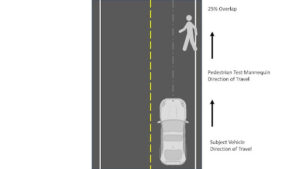
Figure 3. Example of pedestrian automotive braking system test scenario – pedestrian along
path, moving basic setup
One distinction included in the new NHTSA proposal, which was missing from the 2016 recommendation, was the requirement for accurate pedestrian detection in low light conditions and at night. For onsemi, this was already a high priority and is one of the defining features for the Hyperlux image sensor family, featuring a 2.1 µm pixel size and industry-leading 150 dB ultra-high dynamic range (HDR) for accurate images from 0.05 lux to 2 million lux brightness scenes.
Let’s benchmark Hyperlux’s low light performance versus the NHTSA proposal, again considering the most stringent vehicle-to-pedestrian scenario (i.e., a pedestrian walking along the path of the approaching vehicle), but now during nighttime.
The proposal mentions an ambient light level of 0.2 lux (moonlight conditions) and vehicle lower beam/upper beam lighting, however without specifying vehicle lighting illuminance levels (unlike the Euro NCAP).
A 2019 study by the American Automobile Association (AAA) on US/European cars’ headlamp performance indicates an average lower beam lighting level of about 9 lux at the pedestrian location. Assuming a worst-case pedestrian reflectivity of 10% (dark clothing) and a typical automotive lens (F-number 1.4) results in an illuminance level of 0.11 lux at the sensor. For a typical integration time of 33 ms (night conditions), the Hyperlux sensor family achieves a signal-to-noise ratio (SNR) of 5 already at an illuminance level of 0.03 lux (about 4 times lower than required by the NHTSA) and an SNR of 10 at an illuminance level of 0.10 lux!
When exiting a tunnel on a sunny day, Hyperlux HDR performance allows a car to see both the vehicles in the immediate vicinity and any potential hazards beyond the end of the tunnel. Historically, many solutions have lacked the dynamic range to successfully capture both areas of the image properly, leading to potential risks being invisible to the car’s processors, or added latency to account for settings changes. In scenes such as those in Figure 3, the HDR performance of the Hyperlux sensor family allows for the accurate tracking of objects, such as cars, traffic lights and pedestrians, in an image’s center frame, periphery and in the distance, even when light levels are dropping.
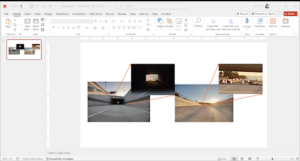
Figure 4: Hyperlux sensor HDR performance when entering and exiting a tunnel
The accuracy offered by Hyperlux sensors, along with their integrated security and industry’s highest level of image sensor safety rating, exceed basic AEB applications. The high accuracy, speed and advanced features are ready for ADAS Level 2 systems and beyond, helping manufacturers transition towards autonomous driving.
NHTSA and the future of vehicle safety
With the NHTSA AEB mandate, we asked whether it goes far and fast enough. Now, while any standard looking to further the safety of vehicles should, in theory, be applauded, if it is to be impactful it must be ahead of the industry. Looking at progress in Europe, NHTSA’s rule is at least five years behind (vehicle-to-vehicle). Comparing the standard against the latest sensing products again highlights a disparity. Sensors such as Hyperlux can already fulfill the proposed AEB requirements, including low light performance, as well as enabling further technologies such as lane departure systems and fully autonomous driving. By 2030, many vehicles with ADAS systems will likely go beyond the NHTSA standard.
If we look at market trends, the situation is similar. Automakers continually add and updatemfeatures in their new models, in an effort to create a more premium and safer vehicle for consumers. AEB is something that is expected to be available and state of the art. This factor continues to drive sales of vehicles featuring ADAS technologies such as AEB. With most manufacturers rapidly closing in on 100% AEB deployment across their lineups, many designers are looking at more revolutionary ways of increasing vehicle safety. While elements of the NHTSA mandate are positive, such as the low light testing, it is clear that given the importance, perhaps it could go even further to drive higher capability at higher speeds and save more lives. There is in parallel an effort from vehicle manufacturers and their suppliers to utilize innovative technologies to increase vehicle safety, reduce automobile accidents and fatalities. It is this combined force from leading automotive manufacturers and their ecosystem suppliers, such as onsemi, that many cars will be equipped with far more advanced safety features ahead of when they are required.









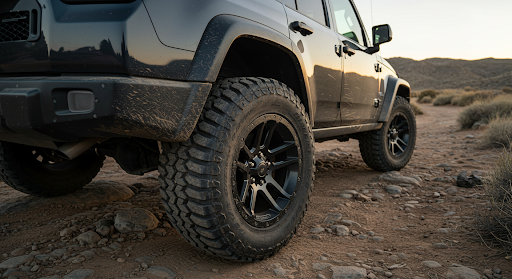
1 thought on “How will NHTSA’s most recent AEB ruling affect consumers and the automotive industry?”